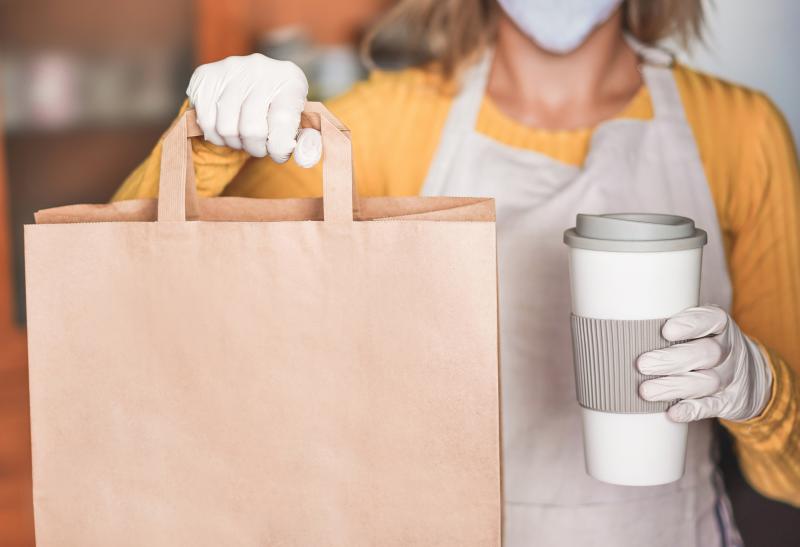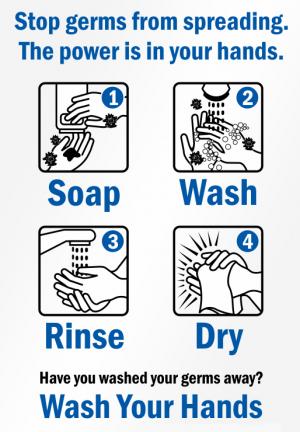Critical control and critical thinking keep restaurants safe and clean
Last weekend’s reports and photos of hundreds of people dining elbow-to-elbow at an upstate mall resurrected ongoing questions as to why already struggling restaurants have been saddled with increasingly arbitrary restrictions on seating, masks, etc.
My email boxes are overflowing with questions as to why our eateries have been singled out - and required to be policemen - regarding questionable measures (not laws, “measures”) that fly in the face of what’s actually happening at malls, box stores, etc. Political issues aside, the simple fact is that well-run restaurants are, have been and always will be leaders when it comes to sanitation and disinfection.
In spite of that, apparently uninformed people continue to cite these increasingly draconian restrictions to question the safety of restaurants. For some consumers, the concept of hand washing, surface sanitation and being aware of what you touch is a novel concept. Nothing could be further from the truth; all that and more are everyday concerns for well-run eateries. But the hardships heaped upon our friends and neighbors who own and operate restaurants continue to dismiss the very things that make a good restaurant one of the most sanitary places you can be. It almost seems like there could be some agenda other than health.
They say that experience is what you get when you didn’t get what you wanted, and that certainly applies to the volumes of rules and regulations that grew out of real-life encounters with bacteria, viruses and foodborne pathogens. One of the primary compilations of these sanitation procedures is known as HACCP. From the moment a seed is planted or an animal is born (or hatched), Hazard Analysis and Critical Control Points are identified and monitored to ensure that the risk of contamination remains as low as possible. On the restaurant level, strict procedures for storing, handling, cooking and serving become a key element in the training of managers, cooks and even servers. And these procedures merge seamlessly with the need to protect guests from any sort of microbial transmission.
There’s a lot of hysteria and misinformation nowadays regarding gloves, masks and the like. I often hear people complain that the person preparing their food wasn’t wearing gloves, and it seems like that would be a major offense. Interestingly, many state health inspectors disagree. They maintain that gloves can give workers a false sense of security when handling non-food items such as money, doorknobs, cans, boxes, etc. The next time you order from a carryout, a truck or a stand at an outdoor event, watch the preparer’s hands. Does he or she handle your money and make change wearing the same gloves that touched your taco? In the words of the state health inspector for my most recent restaurant, “the only things those gloves keep clean are your hands.” I’ve been impressed by the increasing number of food service workers who change gloves as they handle takeout bags, money and the like.
On a similar note, one of my pet peeves is when a server graciously - and innocently - carries your plate of half-eaten food back into the kitchen to be boxed for you to take home. The danger is that that plate could possibly contact the same surface where fresh food is waiting to be served. What if I had coughed onto my plate while eating? More and more restaurants are wising up to this potential for cross-contamination by bringing the carryout container to the table so the guest can box the leftovers. I suspect that this procedure might soon be added to the wealth of scientifically based and common-sense safeguards that restaurants are required to follow.
Owners, managers and guests trust servers, prep cooks, line cooks, runners, etc. to care enough about their jobs to scrub their hands often - especially after visiting the restroom. Competent owners operate in their best interests by making it clear to employees that the business - and their livelihoods - depend on vigilant food-handling, frequent hand washing and attention to the guests’ well-being.
This concept regarding employees and trust also applies to my “policeman” comment back in paragraph one. There are increasing numbers of angry incidents regarding customers and employees. These include drinks thrown in a bartender’s face when the patron was told he could not sit at the bar, and a conflict I myself witnessed last week when a bartender was forced to tell patrons that they could not dance to the live music. The poor bartender had to kiss that tip goodbye. (That issue of customer rudeness and anger also extends to our beleaguered retail workers, by the way.)
In spite of all the largely unfounded fears out there, chances are overwhelmingly good that restaurant experiences - takeout and otherwise - will be safe and non-toxic. In fact, epidemiological studies have shown that food served even by fast-food chains is safer than that prepared in your own home. Furthermore, technological advances have given rise to improved protocols designed to detect and respond to sanitation issues.
It’s no secret that customers’ sense of well-being is vital to success in this business of eating - whether it’s a food truck, a fast-food drive-thru or a fine-dining steakhouse. By standing back and applying a bit of critical thinking to some of the purported “science” used to justify this ongoing targeting of restaurants, the fact becomes clear that quality eateries have survived because sanitation and cleanliness have always been their No. 1 priority.
























































